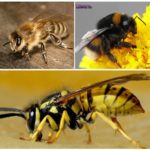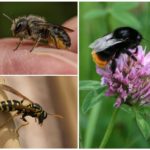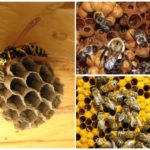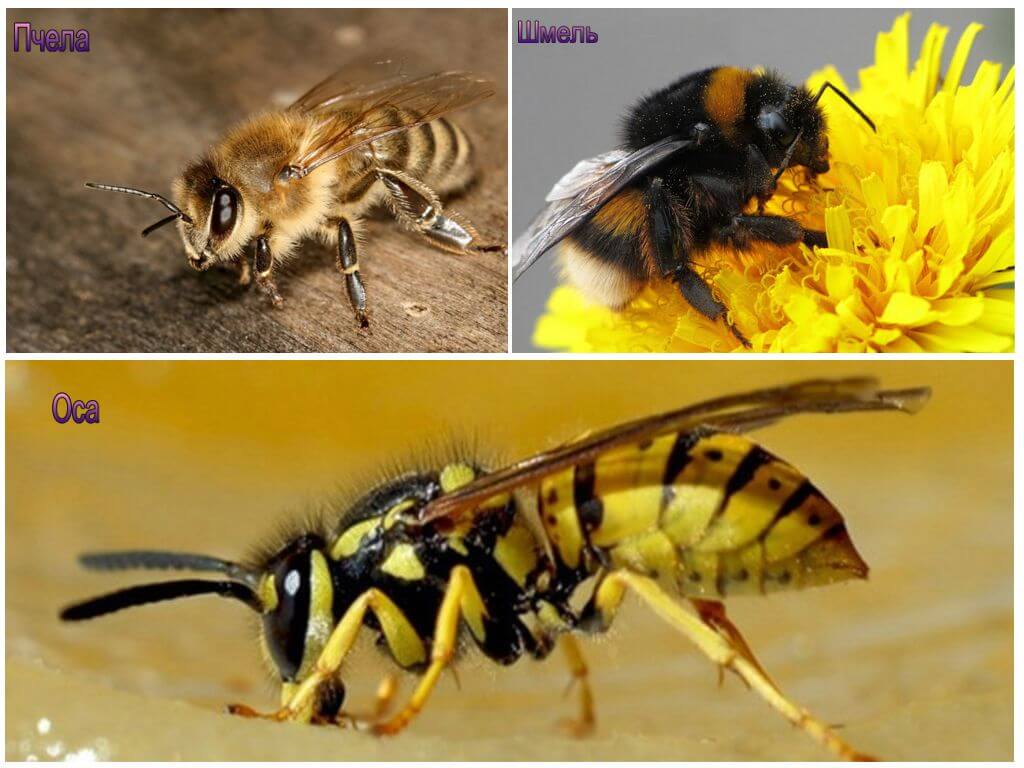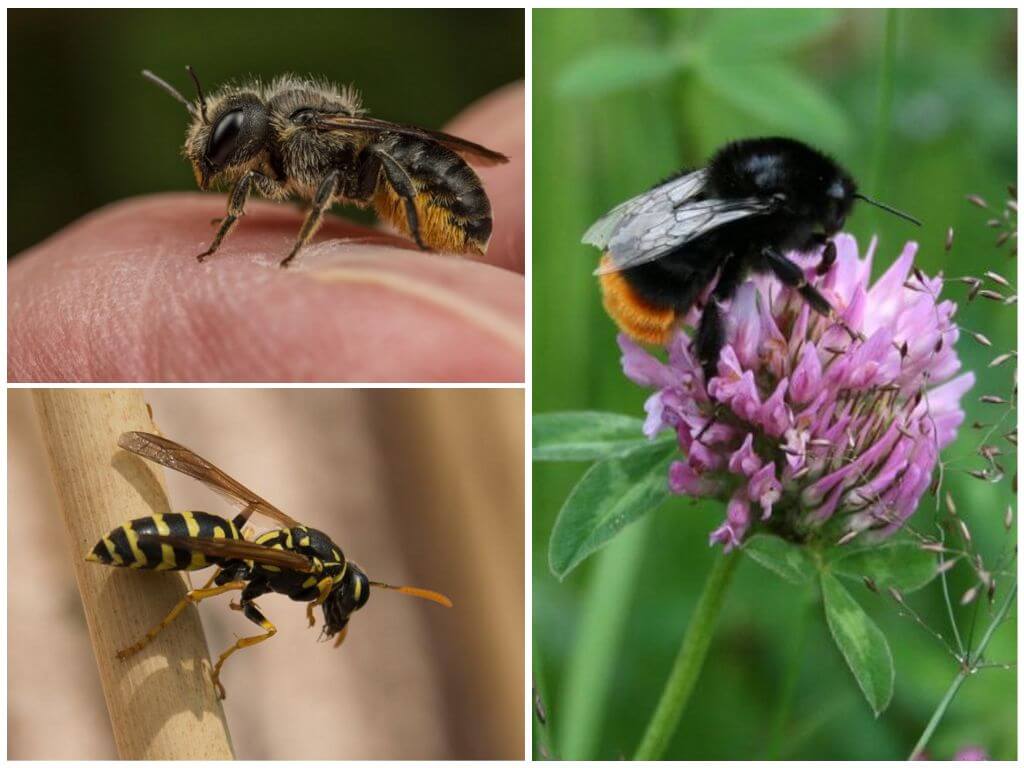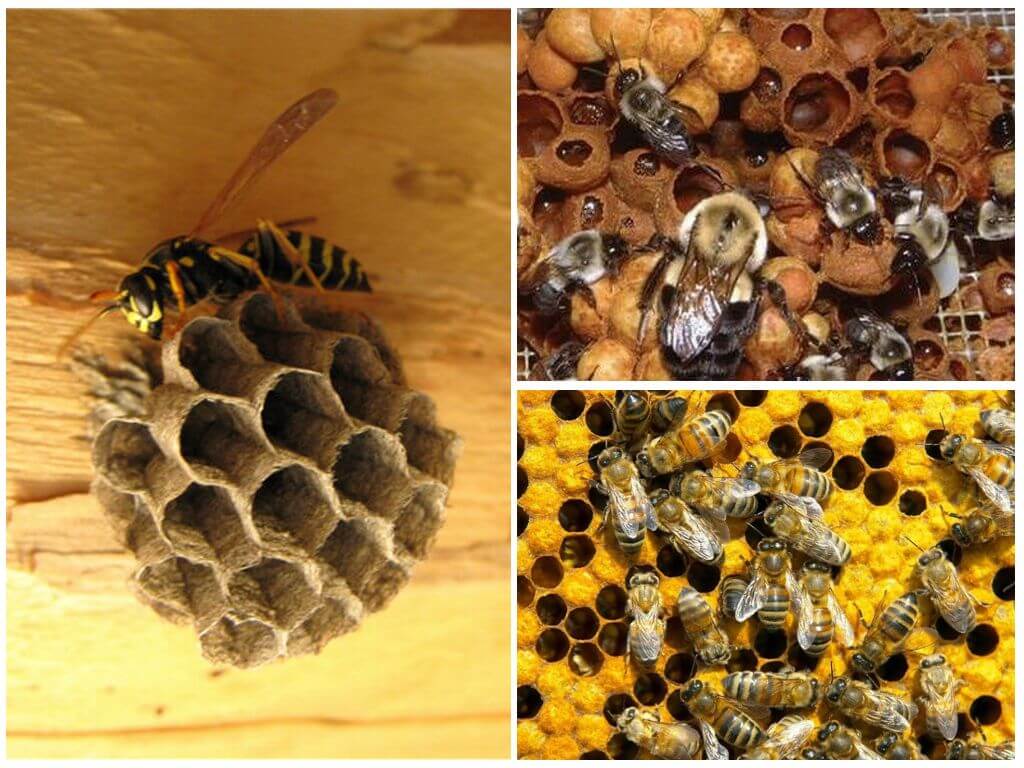Differences of a bumblebee from a bee and a wasp
Content
- Bee, bumblebee and wasp
- Bee, bumblebee and wasp
- Insect nests
Among insects flying in a meadow, there are three genera that a person encounters quite often in his life: bee, wasp, and bumblebee. To confuse them is difficult. They vary greatly in color and size. But sometimes it is possible, if you do not delve into the details of the color of a large insect that has flown into the window. We are used to the fact that the bumblebee is the largest of these three species, but the predatory wasp is hornet significantly longer, and the body length of some bumblebees is shorter than that of a bee.Therefore, it is necessary to sort out in more detail the difference between a wasp, a bee and a bumblebee from each other, and in what they are similar.
Similarity
All three groups belong to the family of Hymenoptera. Wasps, bees, bumblebees are social insects and build nests. All three have stings. In families, there is a division into queens, working individuals and male drones. After the fertilization of the female females, the working individuals drive out the male parasites. Protect their nests by attacking the whole family.
Bees and bumblebees belong to the family of real bees and know how to make honey. Bumble-bee honey surpasses bee in quality, but is not stored for a long time. Both species of these insects are useful pollinators of plants.
Have wasp and bumblebee a smooth sting that they can reuse. Many bumblebees have almost the same paper wasps body coloring.
This is where the similarities end. Now about the difference between wasp, bee, bumblebee from each other.
Differences
Signs on which it is possible to define who flies around, much more. According to them, it is unmistakable to recognize the belonging of an insect to one or another family.
In the first place is “furry”.In terms of furiness, insect rating looks like this:
- Bumblebee.
- Bee.
- Wasp.
Large wasps and small bumblebees are easily confused even by coloring. Among these unrelated insects there are species that are similar in color and location of marks. But wasps are always “bald”.
A bee occupies an intermediate position in the degree of furiness, and for an inattentive observer it often also seems “bald”. In fact, it has bristles, but short and rare.
Coloring
Distinguish a bee from a bumblebee and a wasp the degree of color is quite easy: the first is always dark brown. The stereotype of striped honey collectors arose from cartoons. You can compare photos of bees and bumblebees. Differences will be immediately noticeable.
Two other insects can have not only striped, but also almost monophonic coloring. For example, the shiny wasps are rainbow colored, and Tifia is monotonously black. But usually people consider only insects with black and yellow stripes on their bodies to be wasps. This does not prevent representatives of other families, too painful to bite and sometimes be more dangerous.
Body size
Along the length of the insects can almost not have differences, and therefore only by the indication of body length is difficult to say who we are talking about.But overall dimensions give a clear idea of who is who. This is another point, what distinguishes a bumblebee from a bee or a wasp.
On a note!
With an equal length of the body, a representative of the genus Bombus is always larger and more massive than elegant bees and wasps.
Diet and procurement of supplies
Here between these three representatives of the order Hymenoptera there are the greatest differences. The family of real bees are vegetarians and feed on nectar and flower pollen. Wasps - omnivores with a bias in the sphere of predators and scavengers.
The difference between a bee and a bumblebee in this area is that the first ones make stocks for the winter and go for wintering with the whole family. The second honey is needed only for feeding the larvae. Of the entire bumblebee family, only the queen remains to spend the winter. Therefore, being able to make honey, bumblebees do not harvest it and are used only for feeding the larvae.
Wasps can eat:
- ripe fruit;
- jam;
- insects;
- carrion.
They feed larvae with protein food. To do this, in nature, working individuals catch insects, including green cadaver flies. In urban conditions, small pieces of meat are cut off from the market or the corpse of a dead animal is found.
They do not make stocks for the winter, since the whole wasp family dies out in the autumn, and only the queen “leaves” for the winter.
Nests
The family of real bees, in the absence of ready-made artificial hives and bumblebees, finds a suitable cavity and begins to build honeycombs there. Their nests do not have a certain shape, as they depend on the cavity in which the queen settled.
The most common and familiar to us real wasps, at the sight of which people do not make mistakes in belonging to an insect, build nests on their own. There can be two types in Russia wasp nest: a spinning elongated vertically (such a draw in cartoons) and a curved "plate" of irregular shape. "Plate" resembles the core of the sunflower, from which the seeds are taken out.
Important!
An “elongated top” may be a nest of hornets.
Wasps build their nests from chewed cellulose glued with saliva. The structure of the nest material strongly resembles thick paper.
Stings
The bee has notches and a "lock" at the tip. This prevents the removal of the sting from the victim’s body. Therefore, the working individual defending the nest dies after the attack. For this reason, the bees attack themselves only if they climb into their hive.
Bumble-bee and wasp-sting insects can easily extract from the victim and use them again. Bite pain bumblebee, wasps and bees directly depends on their size. And the wasp often bites "just like that." With a bumblebee, you must try hard to make him sting.
Behavior
Bumblebee - a loner. If disturbed, it will fly away. Representatives of the genus Bombus are attacked only in case of danger to the nest.
A single worker bee can sometimes curl around an object, figuring out its degree of danger to itself. But it will not sting if you do not swing your arms and do not make any sudden movements. Together they attack only when attacking the hive.
Wasp - the most absurd and intrusive creature of all three. Can curl around the object for a long time. And often stings because of "I want it."
If you suddenly disappear
Ecologists of the world are sounding the alarm, pointing to a reduction in the number of bee and bumble-bee families. If we imagine that suddenly wasps, bumblebees, bees have disappeared, then hardly anyone will notice the absence of the first. Their place will be taken by other insect lovers and carrion. There is not much difference who will kill the pests. However, we should not forget that in addition to harm wasps benefitas well as their relatives.
But the disappearance of pollinators humanity will feel instantly. Without pollinators of a large part of fruit trees and shrubs and bumblebees working on clover and in greenhouses, humanity will suffer hunger. But what to do with the reduction in the number of pollinators, scientists do not yet know.
Just wondering
Finally, some interesting facts about bees, wasps and bumblebees:
- After fertilization of the uterus, the bees pounce on the drones and expel them forever from the hive. “At liberty” the drones quickly perish, since they cannot get food for themselves.
- Wasps make honey, but few people saw it. This almost microscopic droplet at the bottom of a new cell is necessary for the larva only for the first time, until it becomes able to consume protein food.
- Bumblebees wake up before everyone else and collect the nectar first.
- The hornet is a predator, preferring live prey.
- The worker bee can tell family members the way to the food source.
All these insects are very interesting, if not to treat them as annoying and unnecessary creatures. They bring more benefits than harm, and do not destroy them without extreme need.

